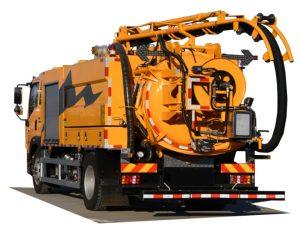Monday to Saturday - 8:00 -17:30
Septic Tank Definition: Understanding the Essential Waste Management System
Introduction
When discussing waste management systems, the term “septic tank” often arises, particularly in rural and suburban areas where centralized sewage systems may not be available. This vital component of wastewater treatment plays a crucial role in maintaining sanitation and protecting public health. In this comprehensive article, we will explore the definition of septic tanks, their functioning, maintenance, common issues, and their environmental impact, providing you a thorough understanding of this important system.
What is a Septic Tank?
A septic tank is an underground, watertight container used for the treatment and disposal of wastewater from homes and businesses not connected to a municipal sewer system. It is a primary component of a septic system, which also includes a drain field, where treated wastewater is dispersed.
How Does a Septic Tank Work?
The working of a septic tank is relatively straightforward:
- Wastewater Collection: Wastewater from fixtures like toilets, sinks, and showers flows into the septic tank.
- Separation of Solids: Within the tank, solids settle at the bottom (sludge) while lighter materials like grease float to the top (scum).
- Bacterial Breakdown: Anaerobic bacteria break down the solids, converting them into liquid and gas. This process reduces the volume of sludge.
- Effluent Release: The liquid effluent is sent out of the tank to the drain field, where further treatment occurs as it percolates through the soil.
Components of a Septic Tank
Understanding the various components of a septic tank can provide insights into how it operates:
- Tank: Usually made from concrete, fiberglass, or plastic, the tank is designed to be watertight.
- Access Ports: These allow easy inspection and pumping of the tank.
- Inlet and Outlet Pipes: They carry wastewater in and treated effluent out of the tank.
- Drain Field: A network of perforated pipes buried in gravel that disperses effluent into the soil for further treatment.
The Importance of Septic Tanks
Septic tanks serve several essential functions that contribute to public health and environmental protection:
Public Health Protection
By treating and disposing of wastewater properly, septic tanks help prevent the spread of diseases associated with untreated sewage, ensuring that communities remain healthy.
Environmental Conservation
Septic systems, when functioning correctly, can minimize the impact of human waste on the environment by allowing for natural filtration processes in the soil.
Cost-Effectiveness
Installing a septic tank can be more cost-effective than connecting to a public sewage system, especially in rural areas, making it a viable option for many homeowners.
Types of Septic Tanks
Septic tanks come in various types, each suited to different needs and conditions:
Conventional Septic Tanks
The traditional option, these tanks work well in areas with sufficient space and a good soil absorption capacity.
Alternative Septic Systems
These systems include aerated treatment units and biofilter systems, suitable for areas with less land or poor soil conditions, providing enhanced treatment options.
Septic Tank Maintenance
Proper maintenance of septic tanks is crucial for ensuring their longevity and effective operation. Regular care can prevent costly repairs and potential environmental damage.
Regular Inspections
It’s recommended to have your septic tank inspected at least once a year by a professional. This helps in identifying signs of malfunction early on.
Pumping and Cleaning
Septic tanks should generally be pumped every 3 to 5 years, depending on usage. This process removes the accumulated sludge, ensuring the system works efficiently.
Water Conservation
To help maintain the functionality of the septic system, practice water conservation techniques such as spreading out loads of laundry and repairing leaking fixtures.
Proper Waste Disposal
Avoid flushing non-biodegradable items, chemicals, and fats down the drain, as these can disrupt the natural bacterial processes essential for effective waste treatment.
Common Septic Tank Problems
Despite their effectiveness, septic tanks can encounter several common issues:
Clogs and Backups
Often caused by flushing inappropriate materials, clogs can lead to serious backups into your home. Regular maintenance can help prevent this problem.
Odors and Gases
Unpleasant odors near the septic tank or drain field can indicate a problem, such as a full tank or leaks. Immediate inspection is crucial.
Drain Field Failures
If the drain field becomes overly saturated, it can lead to poor absorption of effluent, resulting in surface ponding. This typically requires professional intervention.
Environmental Impact of Septic Tanks
While effective, septic tanks can pose environmental risks if not maintained properly.
Groundwater Contamination
Improperly functioning septic systems can leach harmful pathogens and nitrates into groundwater, posing health risks to nearby communities.
Soil Fertility
When functioning correctly, septic systems can naturally treat wastewater, enriching the soil with nutrients. However, overly saturated systems can degrade soil quality.
Regulations and Codes
Many regions have specific regulations regarding septic systems to protect public health and the environment. Ensure compliance to minimize environmental impact.
Practical Example: A Septic System Installation
Consider the case of a family moving to a suburban area without access to municipal sewer systems. Here’s how the installation process typically unfolds:
Site Evaluation
First, a professional conducts a site evaluation to assess soil type and percolation rates, crucial for determining the appropriate system.
Choosing the Right System
Based on the evaluation, the family chooses a conventional septic system suitable for the soil conditions.
Installation
The installation involves excavating for the septic tank and drain field, followed by tank placement and connection to plumbing. Finally, soil is re-covered, ensuring the system is undisturbed.
Frequently Asked Questions (FAQs)
1. How long does a septic tank last?
With proper maintenance, a septic tank can last anywhere from 20 to 30 years.
2. What are the signs that my septic tank needs to be pumped?
Common signs include slow drains, sewage odors, and pooling water around the tank or drain field.
3. Can I use additives in my septic tank?
While some may claim to enhance bacteria levels, most experts advise against using them, as they can disrupt the natural balance.
4. Is it possible to repair a septic tank?
Many common problems can be repaired, but severe damage may require tank replacement. Regular inspections can help assess the situation early on.
5. How deep is a septic tank buried?
Typically, septic tanks are buried 3-4 feet below the surface, depending on local codes and regulations.
6. Can I plant a garden over my septic field?
While you can plant native grasses or flowers over your drain field, avoid deep-rooted plants and trees, as they may interfere with the system.









